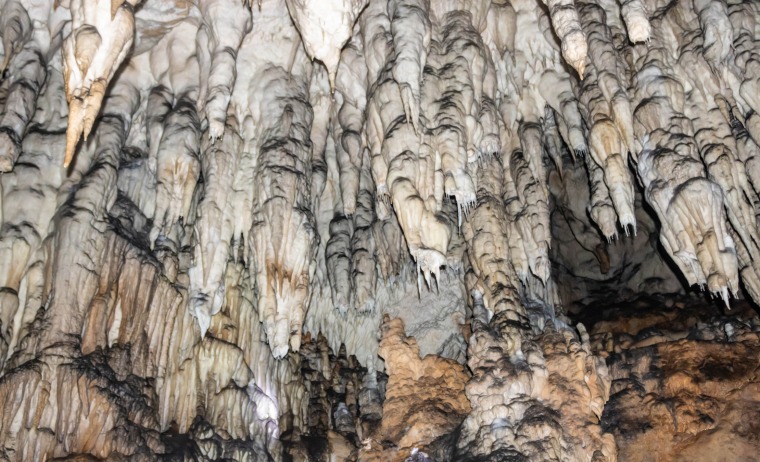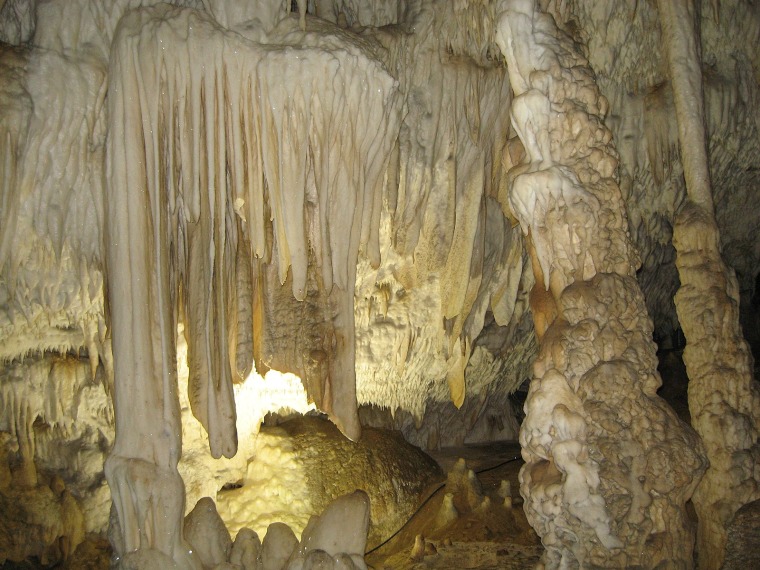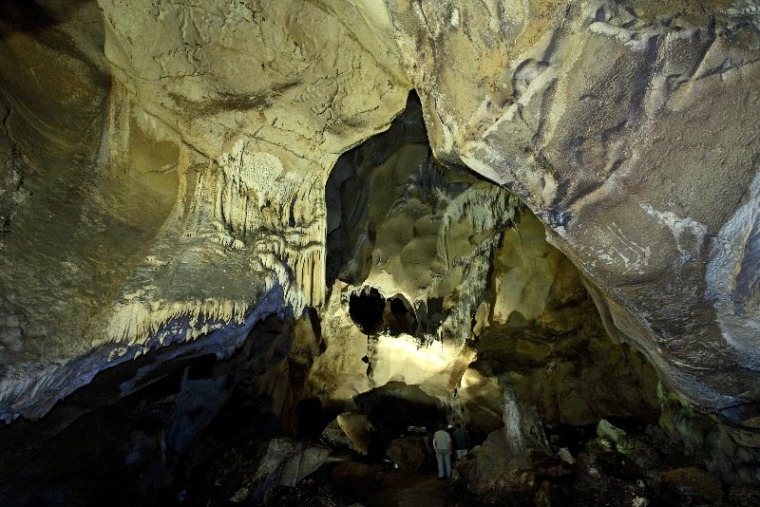The Stopića cave is most famous for its 10 meters high subterranean waterfall but also its climate: it is warm during summertime but cold in winter
The Stopića cave, on the left bank of the Prištavica river, is one of the biggest tourist attractions in Western Serbia, near the city of Užice.
The cave entrance, at 711 meters above sea level, is 18 meters high and 35 meters wide. It is a river cave as the Trnavski stream flows through it. Its main attraction is a 10 meters high underground waterfall.
The Stopića cave is comprised of five sections: the Light Hall, the Dark Hall, the Great Hall with Pools, the Channel with Pools and the River Channel.
It is not very rich in cave formations, but it can boast with amazing inter pools, some of which are even 7 meters deep.
The climate in the Stopića cave is influenced by outside conditions – in winter it is cold and in summer warm, while the waters of the Trnavski stream also affect the cave’s micro-climate. Sixteen hundred meters of the cave system have been explored, including a part of the underwater system of channels.
The limestone layer in the cave dates from the Triassic period and is more than 100 m thick. Several hundred meters of the cave, starting at the entrance, are open for tourist visits, including the Light Hall, the Dark Hall and the Great Hall with Pools.
Recent research have discovered that the amount of water passing through the Stopića cave is three times less than the amount of water that enters the cave, thus it is certain that there are still some undiscovered channels.
The Stopića cave is located 30 kilometers from the city of Užice and 19 kilometers from the tourist center on Mt. Zlatibor, on the way to Sirogojno. The cave is located near and beneath the road.
The access road to the cave has recently been built. There is a new path leading to the cave, a large parking lot and a path leading into the cave, continuing through the cave and leading inside the cave. The inside of the cave is illuminated.
Large sinter pools, formed from the layers of limestone, are the unique feature of the Stopića cave. Large number of pools of different sizes creates a wall with water overflowing the pools. Some pools are up to 12 meter long and up to 7 meter deep.
From the the Great Hall with pools the path leads to the 10 meter high underground waterfall called “the Well of Life”. You will stand breathless in front of the mighty creative power of mother nature.
The first written documents about the Stopića cave date from 1901 and the Records of Serbian Geological Society, while the first speleological researches were conducted by the Serbian scientist Jovan Cvijić in 1909 and 1913. Czech speleologists conducted the first diving explorations in 1984 and discovered underground passages and five halls that are two kilometers long.
How to get to the Stopića cave?
If you are coming from the direction of Belgrade, you need to cross 250km, and the best way to go is to go via the highway to Montenegro until Zlatibor, from where you need another 19km north-east to the Stopića cave.
If you are coming by buses, buses to Zlatibor are frequent from all the major cities in Serbia from where we suggest you take a taxi to the cave.
When you are already there, don’t miss…
“Drvengrad” (eng. Wooden town) – the one of a kind ethno village on Mećavnik, built as imagined by the famous director Emir Kusturica.
On the same road you can visit Kremna, the legendary ethno village home to the greatest Serbian prophets, the Tarabić family.
If you find yourself here in July, don’t miss the Zlatibor brass festival which traditionally gathers the best trumpet players from Serbia as well as many guests from Serbia and abroad. It also serves as a pre competition for the Guča Brass festival which is 43km away from Zlatibor. This trumpet festival is also held towards the end of July.
And you must try specialties of Serbian cuisine: kajmak, prosciutto and cheese, but also the specialty of this region “komplet lepinja”(a kind of bun with kajmak, eggs and gravy).
Photo: Tamburix/Wikimedia commons
Related Articles

Ledenа Pećina in Uvac: Serbia’s Frozen Jewel
October 22, 2024










